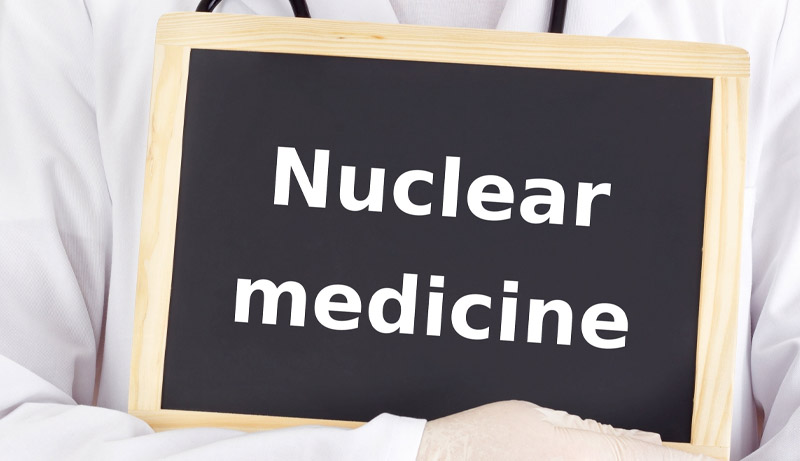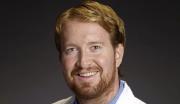
The thought of nuclear medicine may sound a bit daunting and futuristic. In reality, nuclear medicine has been a great diagnostic tool for decades and stems from many scientific discoveries, including the use of artificial radioactivity in 1934.
What is Nuclear Medicine?
Technologist Debbie Devlin, Supervisor of Shore Medical Center’s Nuclear Medicine department, provided a short history lesson on the role of nuclear medicine in diagnosing and treating patients.
"Although nuclear medicine may sound like something very new, it has been around for the better part of a century," Devlin explained. "It was first used to treat thyroid cancer when radioactive iodine was used to treat it in the 1940s but really came into more common use in the 1950s. Nuclear medicine is a very specialized area of radiology that uses very small amounts of radioactive materials called radiopharmaceuticals to examine a specific organ and allows us to see how that organ is functioning," said Devlin. "We can see if the heart has been damaged or affected after a heart attack. It lets us see if the liver is functioning properly, or where a small tumor or blood clot might be. We can see in the lungs if a patient may have an embolism or we can take photos using a gamma camera to see why a patient suffering with nausea and bloating may not be able to digest food properly. Nuclear imaging is a great diagnostic tool."
Nuclear medicine imaging is a combination of many different disciplines: chemistry, physics, mathematics, computer technology, and medicine. According to the Centers for Disease Control and Prevention, nuclear medicine is often used to help diagnose and treat abnormalities in the early progression of a disease, such as thyroid cancer.
Getting the Best Picture
While X-rays are a great tool, Devlin said they pass through soft tissue, such as muscles, blood vessels, and even intestines, unless a contrast agent is used. "The contrast agent allows a clearer picture of the tissue. When we tag, for example, the gallbladder, nuclear imaging makes visualization of the gallbladder possible and looks at its function, blood supply and the physiology of the organ," explained Devlin. "Basically, X-ray looks at the anatomy and nuclear imaging is used to study the organ and tissue function."
Types of scans
As Devlin explained, nuclear imaging helps physicians better understand how a particular organ may be functioning. In a renal scan, the technician checks for abnormalities or an obstruction of blood flow in the kidneys. Bone scans can see if cancer has spread from its primary site into the bone or if an infection may have spread to the bone from a wound.
Positron emission tomography (PET) scan is an imaging test that can help reveal the function of the tissue or organ the healthcare provider wants to see. The PET scan uses a radioactive drug known as a tracer to show both the normal and abnormal activity of the tissue.
Devlin explained there is a difference between a computed tomography (CT) scan and a PET scan. The CT scan uses X-rays to create an image of the body and inner body structures. The PET scan uses molecular imaging, which is a very precise way of detecting disease on a cellular and molecular level.
Mammograms are the first line of the examination of breast tissue. But as Devlin explained, the patient's physician might prescribe a nuclear imaging series if they have been diagnosed with breast cancer to locate precisely whether the cancer has spread to the lymph nodes.
Nuclear imaging is also important in diagnosing cardiac conditions. "Because a cardiac catheterization may be too stressful to the patient, a heart scan may be used to identify abnormal blood flow to the heart and determine the extent of heart muscle damage after a heart attack," said Devlin. "Nuclear imaging is another important diagnostic tool we use to get as much information as possible about the organ's function."
Scrambled eggs, the breakfast of champions for patients with gastroparesis
Normally, you would order your scrambled eggs with a side of toast, but if you are getting scanned for gastroparesis, which is a partial paralysis of the stomach, your eggs are coming with a trace amount of a radiopharmaceutical.
"Normally, the stomach should be half-emptied in about two hours, but for people with gastroparesis, moving food through their stomach is difficult and takes much longer than it should," said Devlin.
Devlin makes the special scrambled eggs for patients to eat and then takes images of their stomach over a two-hour period, looking for how long it takes the eggs to move through their stomach. "The information we gather through the study gives the physician a better idea of how to treat the disease."
Don't glow there
Devlin said, "Patients want to know what happens to the radiopharmaceutical tracer put into the scrambled eggs? I have to remind them that the elements used for all studies have a short half-life, and basically, it will come out in their urine, so we encourage them to drink water and assure them it will not remain in their system."
Parkinson's disease
Devlin explained Shore Medical Center's use of DaTscan gives physicians an additional tool to confirm the diagnosis of Parkinson's disease. First approved by the FDA in 2011, DaTscan is the imaging technology that uses small amounts of radiopharmaceuticals to help confirm a diagnosis of Parkinson's disease. "The neurologist will make a diagnosis of Parkinson's disease based on symptoms, current and past medical conditions and medications that can cause symptoms similar to Parkinson's disease. If a patient does not respond well to typical medications, the doctor may call for further testing, including magnetic resonance imaging (MRI) of the brain. For confirmation of the Parkinson's disease diagnosis, the neurologist may order a DaTscan," said Devlin. "Shore Medical Center is one of the only facilities offering the DaTscan in the region."
Safety First
Devlin explained that each day, the proper radiopharmaceuticals are delivered to the nuclear medicine division of radiology for that day's tests. Each scan conducted that day has the corresponding study element prepared by a pharmacy that specializes in radiopharmaceuticals. According to Devlin, they are brought in and stored for the day's tests in a lined cabinet so it is safe for the technician and the patient.










